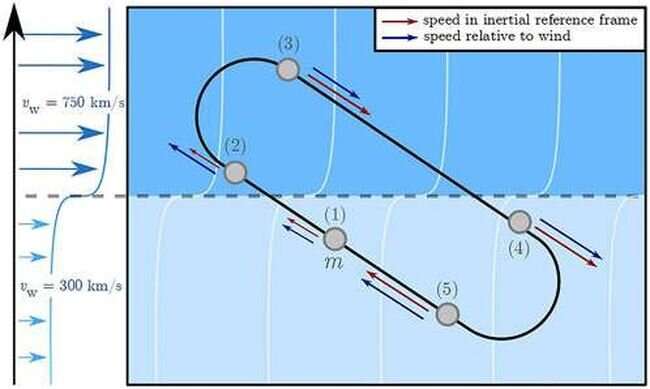Not only would faster vehicles allow for better study of relatively close destinations, such as planets, moons, asteroids and comets in our solar system, it would allow for venturing further out into space within a reasonable study period.
In this new effort, the researchers note that several new approaches to faster space travel, such as solar sails, are currently under study. More recently, some in the field have proposed the idea of magnetic, electric and plasma magnet sails, each with its own positives and negatives. In this new effort, the researchers look at the possibility of creating and using dynamic soaring sails as a way to power a space vehicle.
The idea of dynamic soaring is not new; birds have been using it for millions of years. At its essence, it is a flying technique whereby a bird takes advantage of energy gains by repeatedly crossing the boundaries of masses of air moving at different velocities.
Applying the concept to space travel involves building a vehicle that is capable of making use of the termination shock that occurs in turbulent zones of contrasting stellar winds. Of course, to get to such a zone (such as the one at the edge of the solar system) another form of energy is required.
The researchers suggest the most logical is a directional plasma wave antenna. Using both technologies, the researchers suggest, could result in a craft able to reach a destination such as Jupiter in months, rather than years.
More information: Mathias N. Larrouturou et al, Dynamic soaring as a means to exceed the solar wind speed, Frontiers in Space Technologies (2022). DOI: 10.3389/frspt.2022.1017442
© 2022 Science X Network



